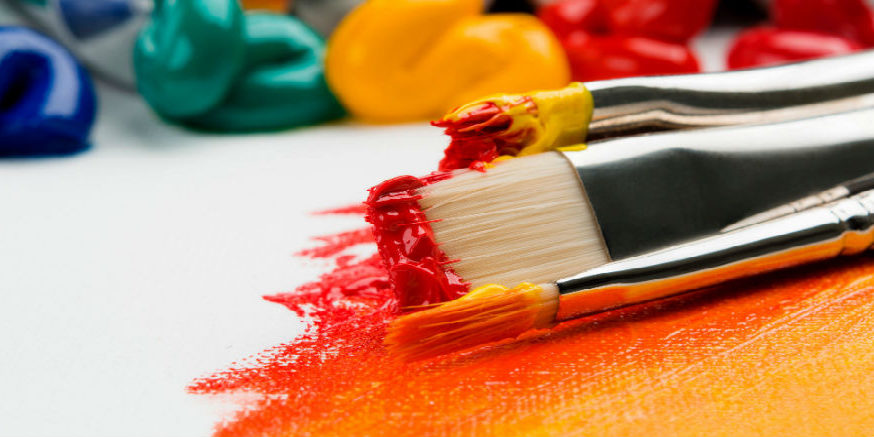The visual arts world requires creativity, precision and a passion for innovation. While some purists believe that technology should not play a role in art, artists are leveraging technology to approach their work in new ways.
One technology that is making waves is augmented reality (AR), which adds digital content to the real world via a smartphone’s camera. In fact, there are some sophisticated augmented reality apps for art that are revolutionizing the industry, allowing artists to expand their range and toolbox.
Enhancing the Real World With Augmented Reality Apps for Art
An AR app called Trace and Draw lets visual artists trace the real world onto their smart device. Artists can save an image to their mobile device and incorporate it into the live camera feed. Then, the user can trace the image while it’s on the screen of the mobile device. The ability to sketch real images onto a live camera feed helps streamline the process that many graphic designers go through when combining images.
Users can also make adjustments such as image transparency or add filters that help to minimize busy backgrounds. Plus, the app includes guiding lines that make it easier for users to determine the horizontal and vertical lines of the world in front of them.
Visual artists can use apps such as these to expand their creative endeavors or more effectively complete art for commercial applications, such as logo creation. They could even place their sketches over the real world to create graphics of historically important places in order to bolster that region’s tourism. It’s also conceivable that developers could create an app that captures videos of the real world with digitally-overlayed images, sketches and animations on top of them for marketing purposes.
Test What Artwork Will Look Like in Your Home
Homeowners hoping to see what certain art will look like hanging on their walls can now do so thanks to augmented reality. A few years ago, IKEA released an app that allows users to virtually examine what certain furniture would look like in their homes, considering lighting, shades and depth perception. Artsy developed a similar augmented reality app that allows users to examine what a certain painting or print would look like in their home. The Artsy app also makes it easy to add a piece to your cart and purchase it.
Art.com created a similar app. It includes more than 800,000 works of art and it sizes them accurately in order to see how they would look on your wall. Users can choose from different framing options and place multiple works of art next to each other to see how they would fit together in a gallery setting.
Apps such as these support artists by making it easier for consumers to select and purchase artwork. Art can be expensive, but augmented reality is helping consumers get an accurate idea of how a piece would fit into their home with a low margin of error so they can buy with confidence.
Changing the Modern Museum Setting With AR
Augmented reality is already impacting what is accepted in the art world by enhancing the role of 3D technology. In fact, some museums are adopting AR technology, as is the case with New York’s iconic Museum of Modern Art (MoMA). Less than a year ago, a group of artists transformed the Jackson Pollock gallery into an AR wonderland.
To the naked eye, the Pollock gallery looked the same, consisting of drip paintings that are as disturbing as they are beautiful. However, users with the MoMAR Gallery app can see additional content via their mobile devices, transforming (or mutilating) the artwork into new creations with a digital twist. This could be just the beginning of a global movement to reinterpret museum artwork using the power of AR.
Augmented reality can also add history and context to artwork in museums. In 1990, thieves stole thirteen works of art from the Isabella Stewart Gardner Museum in Boston, costing the institution roughly $500 million. Later, a startup developed an AR app designed to recreate images of the missing paintings on their original frames. As a result, patrons with the app can still view the stolen paintings, in addition to learning more about how the heist happened.
Ultimately, augmented reality can serve as an additional tool for visual artists to expand their craft in a digital, three-dimensional environment. Artists and museums can also use it to transform classic works of art or offer more context on certain pieces. Individual artists, graphic design groups, museums and other teams of artists have been on the hunt for new ways to incorporate technology into their work, and AR is at the cusp of this movement.
Developing an augmented reality app for art requires a flair for both creative and solid technical skills. Fortunately, that’s precisely what you’ll find at 7T. We specialize in custom mobile app development and augmented reality. In addition, we work with other emerging technologies, including Internet of Things, machine learning, artificial intelligence and natural language processing.
7T is headquartered in Dallas. However, we also serve clients in Austin, Houston, and beyond. If you’re ready to discuss your augmented reality app development project, we invite you to contact us today.









